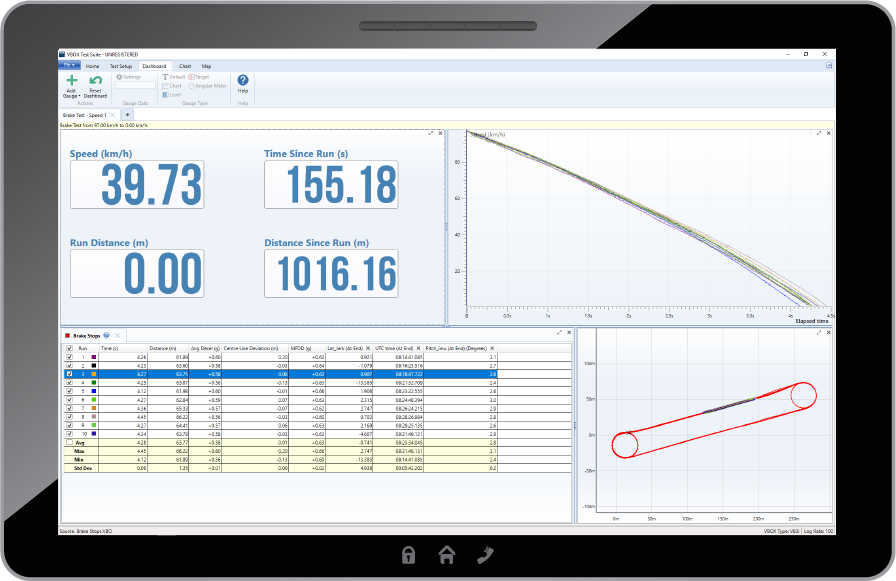Brake Testing
VBOX equipment has led the way in high-accuracy brake testing for more than twenty years.
Measure braking distance to within +/-1.8 cm
Record brake pedal application, pedal force & brake temperature
Eliminate over-shoot errors for speed to zero brake tests with IMU integration
Test in accordance with R13 H, R78, R98, ISO 21994 and SAE J2909
Analyse with dedicated VBOX Test Suite brake testing plugins
Key Features
Due to their high precision, flexibility, and ease of installation (they can be moved from vehicle to vehicle in minutes), VBOX systems are used by almost every automotive and tyre manufacturer in the world to carry out brake distance measurements.

Standard-compliant
VBOX systems enable you to easily conduct brake tests in accordance with ECE R13 H Braking, ECE R90 Brake Pad Testing, ECE R78 Motorcycle Brake Systems, FMVSS135, ADR 31, ISO 21994, and SAE J2909 regulations.

Live Display
VBOX Test Suite installed on a Windows device within the test vehicle offers real-time display of all measured parameters. Having instant feedback can save valuable testing time, particularly for more complicated tests such as R139 BAS.
Free data analysis software with five Brake Testing plugins
VBOX Test Suite is our user-friendly, intuitive data analysis software that is free to all VBOX users. It makes the process of recording and analysing your test data as quick and easy as possible.
![]() The software comes with five Brake Testing plugins for Trigger brake stops, Speed-to-speed brake stops, homologation testing to ECE R78, SAE J2909, and Category "B" Brake Assist Systems tests to ECE R139.
The software comes with five Brake Testing plugins for Trigger brake stops, Speed-to-speed brake stops, homologation testing to ECE R78, SAE J2909, and Category "B" Brake Assist Systems tests to ECE R139.
Tests can be run within a tightly defined set of criteria, such as between temperature ranges. Centreline deviation is automatically calculated during each run, and thresholds can be applied to ensure that the operative gets immediate feedback on the validity of results.
The plugin also produces a comprehensive report that includes all the relevant test results along with the engineer's notes.
Testing Equipment
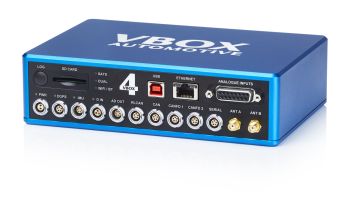
VBOX 4
Most braking departments use the VBOX 4 100 Hz GPS data logger for measuring braking distance, along with a VBOX IMU, to counteract the lever arm effect for speed triggered measurements, or in areas of low GPS visibility.
The VBOX 4 measures braking distances to within ±1.8 cm accuracy, which is why it quickly became the industry standard data logger of choice.
Don't require data logging? VBOX Speed Sensors offer the same accuracy at a lower price point.
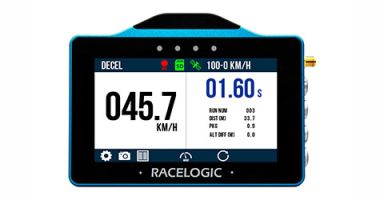
VBOX Touch
VBOX Touch is a highly versatile, cost-effective, touch screen data logger ideal for use in speed-to-speed and trigger activated deceleration tests.
The VBOX Touch is available in two models, one with RTK corrections and one without. Both versions can connect directly to a brake trigger.
In a trigger activated test, the standard system has a braking distance accuracy within 10 cm, whilst the RTK version gives results to within 5 cm.
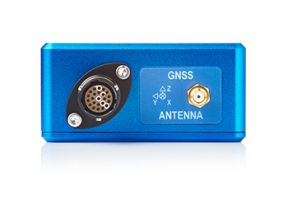
VBOX 3iS
With it’s 100 Hz GNSS receiver, internal IMU and integrated wheel speed data from the vehicle’s CAN bus, the VBOX 3iS speed sensor offers precise measurements of pitch, roll and yaw, as well as position and speed, even in areas with poor satellite signal.
The accurate measurement of attitude channels makes VBOX 3iS an ideal solution for a wide range of vehicle dynamics testing including suspension, chassis, and brake testing. The VBOX 3iS measures braking distances to within ±1.8 cm accuracy.
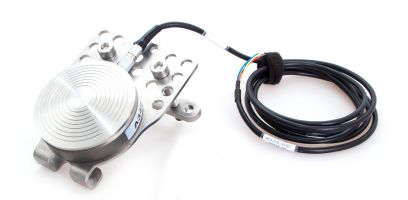
Brake Trigger/ Pedal Force Sensor
All VBOX brake test equipment can measure the precise moment of the brake pedal application when using a simple brake pedal trigger such as the RLVBACS004.
VBOX 4 can also be used with our new Pedal Force Sensor measuring the amount of force applied to a brake pedal, in accordance with SAE and ECE standards, and automatically triggering the start of a test as soon as any pressure is detected.
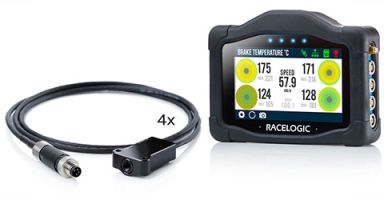
Brake Temp Monitoring System
The Brake Temperature Sensors measure the highly transient surface temperature of a brake rotor at multiple points, making it possible to acquire the time-based temperature distribution across a rotor's surface in order to evaluate & optimize the pad pressure distribution, pad selection, cooling efficiency, braking efficiency, and hot spot formations.
Temperatures are measured at 16, 8 or 4 points, at a sampling frequency of up to 100 Hz and object temperatures between -20 to 950˚C.
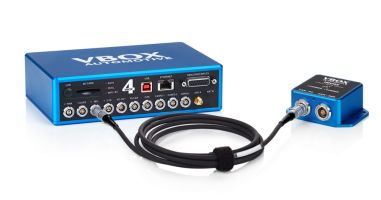
IMU Integration
When measuring braking distances between two speeds with a VBOX 4 data logger, the integration of an IMU improves all parameters measured in real-time, enhancing accuracy and noise levels.
IMU integration also combats satellite drop-out for up to 10 seconds without lock.
VBOX IMU provides highly accurate measurements of pitch, roll and yaw rate, as well as x, y, z acceleration via three accelerometers.
VBOX systems are suitable for the following test scenarios:
- ECE regulation 13H Braking
- ECE regulation R90 Brake Pad Testing
- ECE regulation R78 Motorcycle Brake Systems
- ECE regulation R139 Category "B" Brake Assist Systems
- FMVSS135 regulation
- ADR 31 regulation
- ISO 21994 standard
- SAE J2909
- ABS testing and development
- Tyre testing and development
- AMS testing
Measured Parameters
- Trigger speed
- Braking distance
- Centreline deviation
- MFDD
- Result statistics
- Lateral and Longitudinal G-forces
- Brake temperatures (with TC8 or infrared sensors)
- Pedal force and travel sensors
- Pitch, Roll and Yaw (using the IMU04)
How we verify brake distance accuracies?
We regularly verify the brake test measurements obtained by VBOX systems against a light barrier, laser, and RTK DGPS setup with Base Station to confirm its high positional accuracy.
We also capture the test on our LabSat GPS simulator, which records the raw GPS signals and the brake trigger input, and allows us to replay it through any VBOX on the bench. This gives us a repeatable reference to check against any new firmware or hardware updates, and maintains a high standard of brake testing accuracy.

GPS Accuracy






